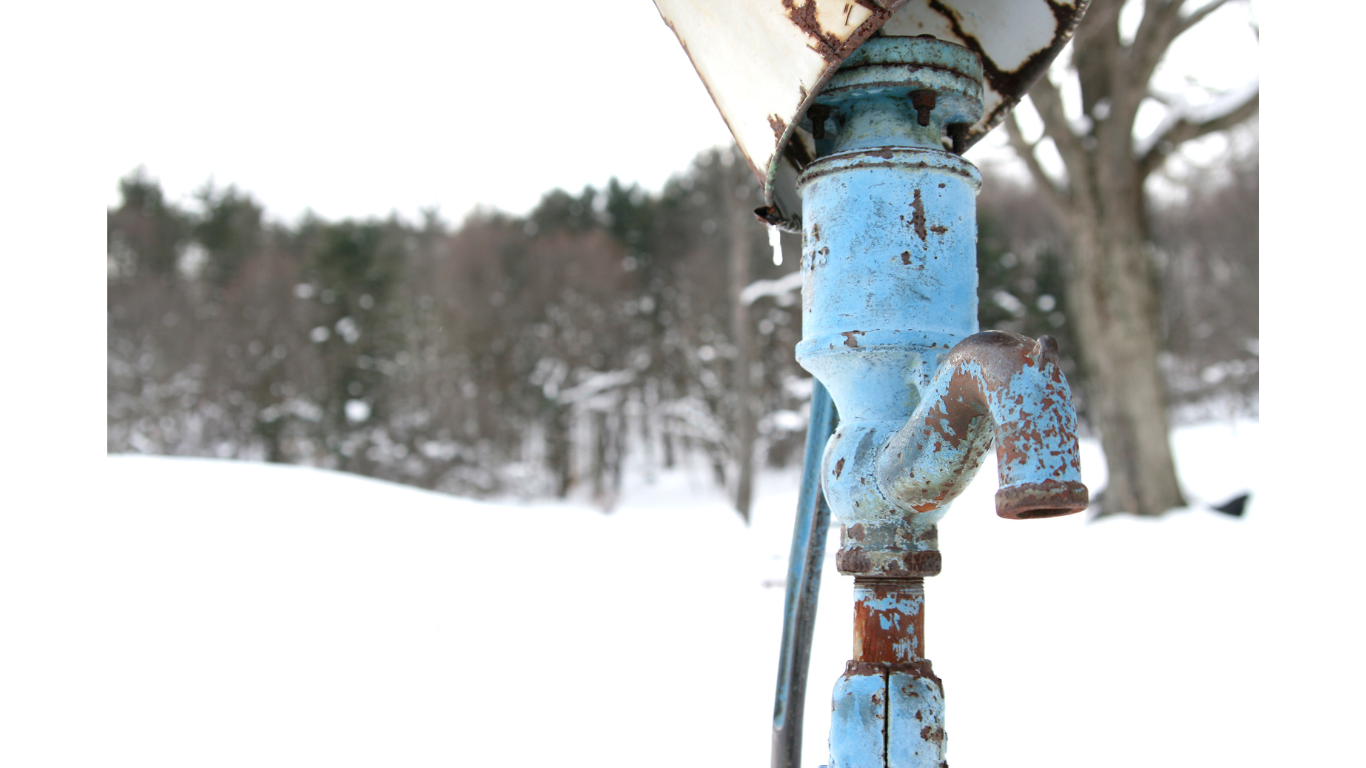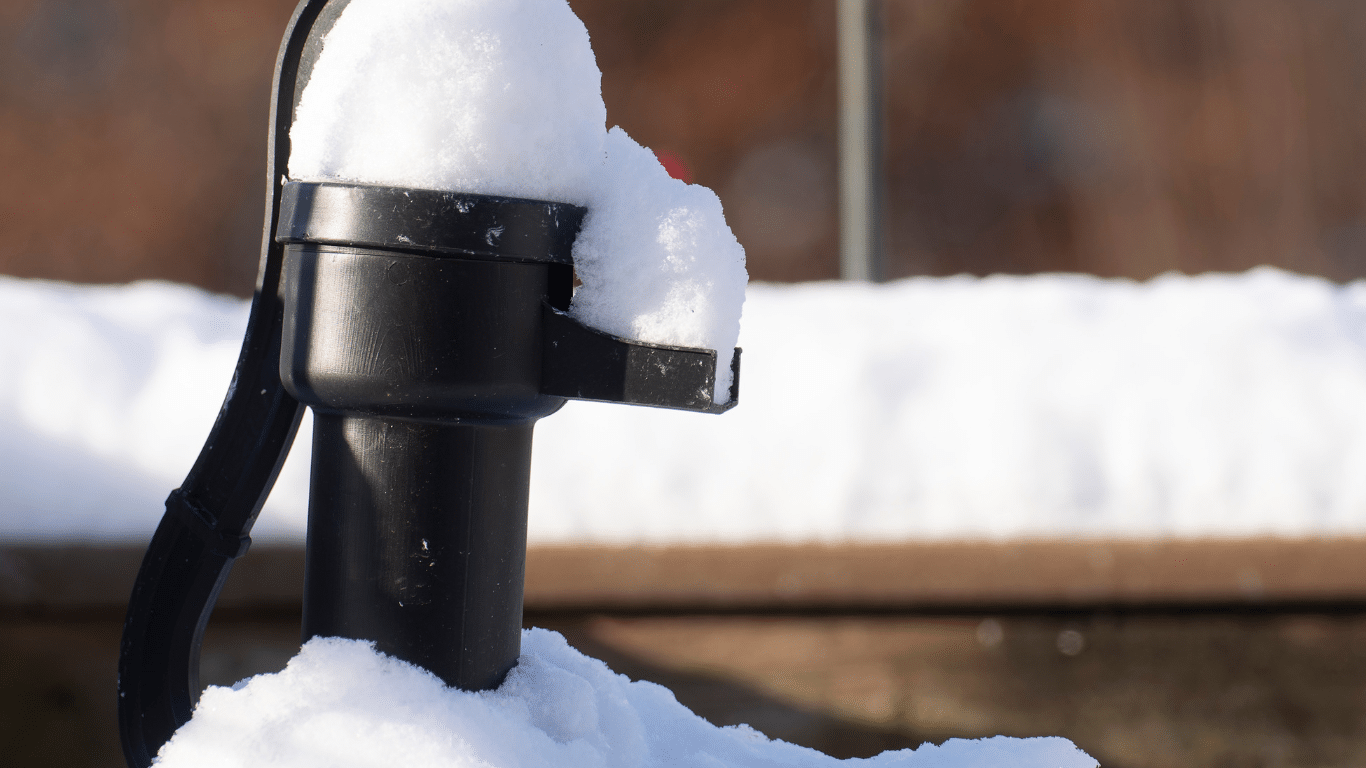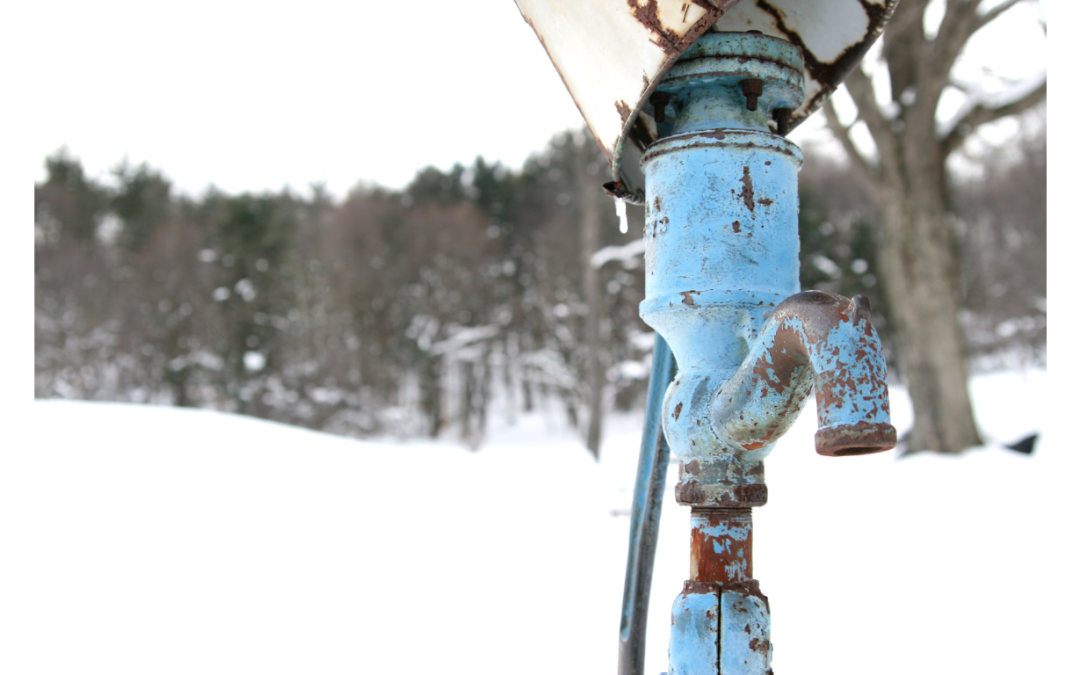How To Unfreeze Well Water Pipes?
Ever found yourself staring at your water pump as the first frost of the season sets in, wondering:
“How on earth do I winterize this thing?”
You’re not alone.
Many homeowners, farmers, and pool owners grapple with the same question yearly when temperatures drop. Whether it’s irrigation pumps for your crops, pool pumps for your backyard oasis, or surface water pumps for your pond, the need to be winterized is universal.
Why? Well, let’s paint a picture. Imagine a cold snap hitting overnight, freezing temperatures creeping into your pump chambers. Your cast iron pump cases, sturdy as they are, can’t withstand the expanding ice.

The result?
Cracked cases, damaged impellers, and a hefty repair bill come spring, not to mention the havoc it wreaks on your irrigation system or the inconvenience of a non-operational pool pump. Each has its unique winterization process, from your irrigation pump to your pool pumps and even the pond pumps.
Winterizing your pump is key. It involves draining water, using winterization fluid, and safeguarding your pump from harsh weather.
But don’t worry, we’ve got you covered.
Whether dealing with drain valves and plugs or using a suction vacuum to remove the remaining water, we’ll guide you through it all.
Why Should You Winterize A Water Well Pump?
Freezing temperatures are a water pump’s worst enemy. When water freezes, it expands. Now, imagine this happening in your pump chambers or discharge pipes. The expanding ice exerts pressure on the pump case, be it a surface pump case or a submersible pump designed to operate deep underwater. This can lead to cracks, causing leaks and rendering your pump inoperable.
The cost implications of not winterizing your pump can be significant. Repairing or replacing a damaged pump can burn a hole in your pocket, not to mention the inconvenience of being without a functioning water pump in winter.
Winterizing your pump, however, can save you from this headache. Here are some benefits of winterization:
-
Longevity: Winterizing can extend the life of your pump. It prevents damage from freezing temperatures, ensuring your pump serves you longer.
-
Cost Savings: You save on costly repairs or replacements by preventing potential damage.
-
Peace of Mind: With your pump safely winterized, you can rest easy knowing your water supply is secure, even in the coldest weather.
Efficiency: A well-maintained pump operates more efficiently. Winterization is a part of regular pump maintenance that keeps your pump running at its best.
How Do You Winterize A Water Well Pump?
Winterizing your water well pump doesn’t have to be a chore. In fact, with the right approach, it can be a straightforward process.
Here’s a step-by-step guide to walk you through it, ensuring your pump is ready to brave the winter chill:
- Gathering Necessary Materials: You’ll need a few things: pump winterization fluid (food-grade propylene glycol is a good choice), insulation materials, and tools for opening drain valves and plugs.
- Draining the Pump and Pipes: Start by turning off the pump. Open the bottom drain valves and remove the drain plug to let the remaining water out. You want the pump chambers and discharge piping as dry as possible to prevent freezing.
- Insulating the Pump and Pipes: Once drained, it’s time to insulate. Wrap the pump body and pipes in insulation to protect them from the cold weather.
-
Protecting the Pump Housing: Cover the pump case with a protective cover to shield it from the elements. This is especially important if your pump is not designed to operate deep underwater.
Regular Maintenance and Checks During Winter: Keep an eye on your pump throughout the winter. Regular checks will help you spot any issues early and take corrective action.

Tips and Tricks for Effective Winterization
Winterizing water pump is not just about following the steps; it’s about doing it right. Here are some insider tips to make the process even more effective:
-
Suction Vacuum: After draining the pump and pipes, consider using a suction vacuum to remove any remaining water. This ensures that every nook and cranny is free of water that could freeze.
-
Heater Use: If you live in an area where the cold is particularly harsh, using a heater near your pump can provide additional protection against freezing.
-
Antifreeze: Filling the pump with antifreeze, such as ethylene glycol, can keep the impeller free and ready for action when spring arrives.
Common Mistakes to Avoid When Winterizing Your Pump
Even with the best intentions, mistakes can happen. Here are some common pitfalls to avoid when winterizing your pump:
-
Incomplete Draining: One of the most common mistakes is not draining the pump entirely. Any remaining water can freeze and cause damage. Make sure to open all drain valves and remove the drain plug to let all the water out.
-
Neglecting Regular Checks: Winter can be unpredictable. Regular checks throughout the season can help you spot any issues early and take corrective action. Don’t just winterize and forget; keep an eye on your pump.
-
Forgetting the Pump Housing: The pump case is just as susceptible to cold as the rest. Protecting the pump housing is crucial, especially if your pump is not designed to operate deep underwater.
Final Thoughts
It’s clear that winterizing your water pump is not just a good idea—it’s a necessity.
From protecting your pump case to ensuring your impeller is free to spin come spring, winterization is your ticket to a worry-free winter. It’s about safeguarding your investment, ensuring the longevity of your pump, and maintaining the efficiency of your irrigation systems, even when the cold weather rolls in.
But remember, while this guide provides you with the basics, every pump, and situation is unique. The specific needs of your pump may vary based on its type, location, and severity of your winter weather.
That’s where we come in. At WildHeron Drilling, we’re experts in all things pumps. From helping you choose the right pump to guide you through the winterization process, we’ve got you covered.
Why not take the guesswork out of the equation?
Visit WildHeronDrilling today to get a quote. Let us help you ensure your water pump is ready to face the cold weather, so you can sit back, relax, and enjoy the winter season.
After all, isn’t that what winter is all about?
FAQs (Frequently Asked Questions)
What materials do I need to winterize my water well pump?
To winterize your water well pump, you’ll need pump winterization fluid (like propylene glycol), insulation materials, and tools to open the bottom drain valves and remove the drain plug. It’s also handy to have a suction vacuum to ensure all water is removed from the pump body and discharge piping. Remember, each pump, from irrigation to water pumps, has specific needs, so check your pump’s manual for any additional requirements.
How often should I check my pump during winter?
You should check your pump at least once a month during winter. Regular checks help you spot potential issues early, such as ice formation or damage to the pump case, especially if it’s cast iron. Keep an eye on the weather too. If freezing weather is forecasted, checking your pump before and after is a good idea to ensure it’s coping well.
What should I do if my pump freezes despite winterization?
If your pump freezes despite winterization, don’t panic. First, turn off the pump to prevent further damage. Then, gently use a heater or hairdryer to thaw the frozen parts. Do not use open flame or excessive heat, as it can cause further damage. Once melted, check for any damage, especially to the impeller. If you find damage or if the pump doesn’t start, it’s best to call in a professional. Remember, prevention is better than cure, so ensure your pump is correctly winterized before the cold weather hits.

